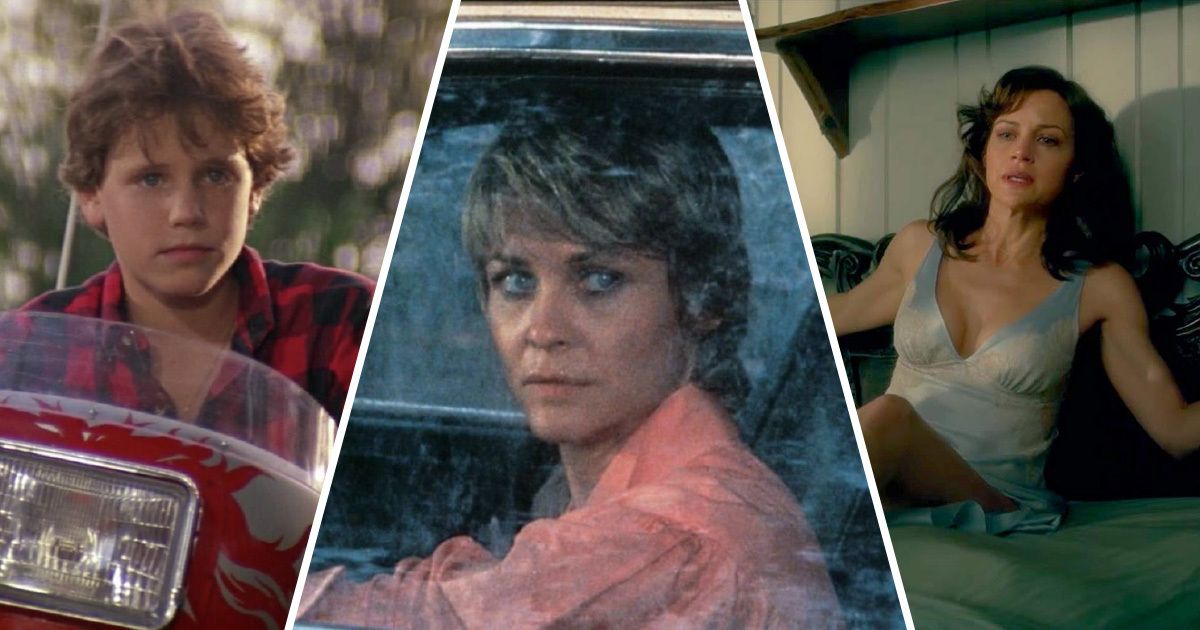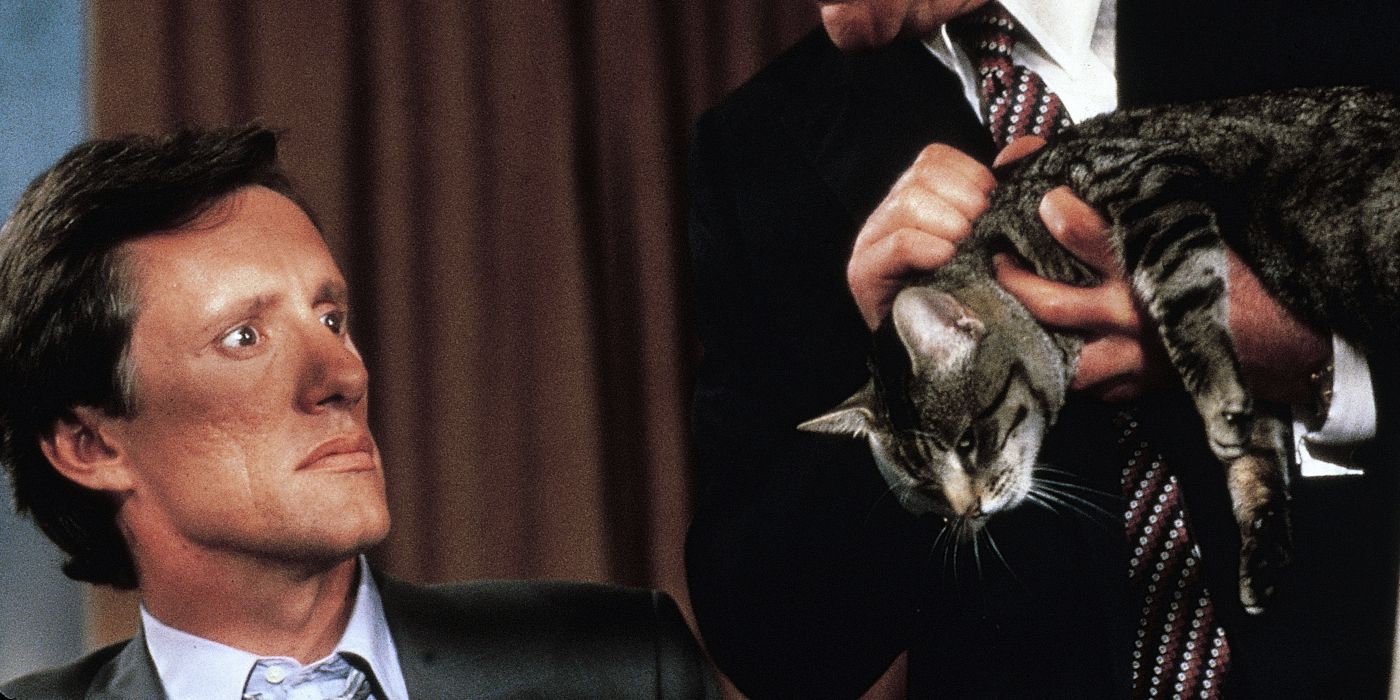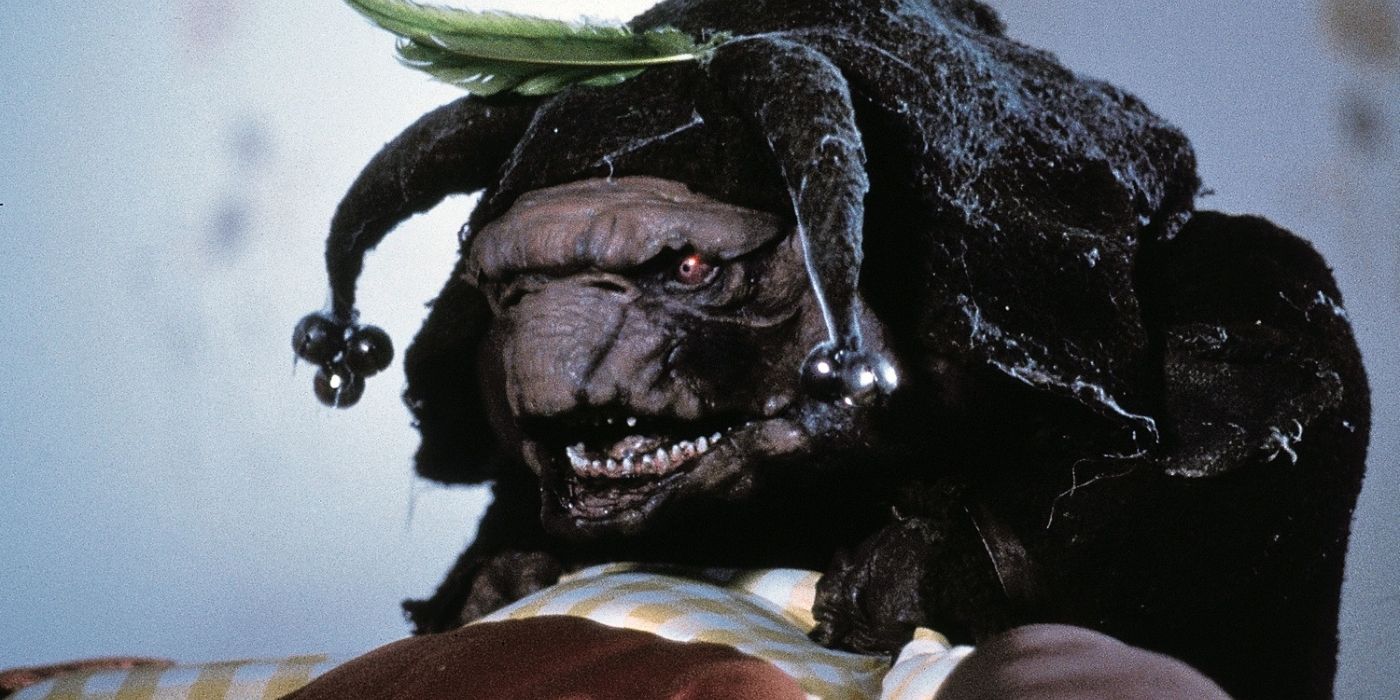The first time Stephen King became directly involved with a feature film adaptation based on his work was with the 1982 horror comedy anthology film Creepshow, for which he wrote the screenplay. King then teamed with legendary producer Dino De Laurentiis to construct an anthology film as a feature-starring vehicle for Drew Barrymore, the star of De Laurentiis’s 1984 film adaptation of King’s 1980 novel Firestarter. The result of this collaboration was the 1985 anthology horror film Cat’s Eye, which consists of two segments based on short stories, “Quitters, Inc.” and “The Ledge,” followed by a concluding third segment, “General,” that King wrote for the screen.
The three segments in Cat’s Eye are unified by the presence of Barrymore, who first appears as the disembodied image of a young girl in need of rescue, and the titular roaming cat, which plays a vital role in each segment. However, Cat’s Eye is most notable for its consistent entertainment value from beginning to end. While everyone who has watched Cat’s Eye undoubtedly has a favorite segment from the film, there are no truly weak links with the trio of segments. Overlooked at the time of its release, amid the barrage of King adaptations that flooded theaters in the early to mid-1980s, Cat’s Eye deserves to be ranked alongside The Dead Zone and Stand by Me among the best King films of the 1980s, in addition to serving as a blueprint model for all future anthology horror films.
‘Cat’s Eye’ Is an Entertaining Combination of Comedy and Horror
Cat’s Eye
- Release Date
-
April 12, 1985
- Runtime
-
94 Minutes
- Director
-
Lewis Teague
Stephen King has had a decidedly uneven relationship with the countless adaptations of his work. While the 1980 psychological horror film The Shining, based on his 1977 novel, is widely regarded as being one of the greatest horror films ever made, King has never been a fan of Stanley Kubrick’s adaptation. He has always had a fondness for those adaptations that capture his lowbrow sensibilities while being faithful to the source material. Of course, the best way for a production to remain in King’s good graces has always been to include him as part of the creative process. This was the case with the anthology horror films Cat’s Eye and Creepshow, both of which were scripted by King, who also makes a featured acting appearance in the latter.
King’s morbid sense of humor is especially visible in Cat’s Eye, beginning with the opening “Quitters, Inc.” segment. It stars James Woods as Dick Morrison, a married father who reluctantly visits the titular anti-smoking clinic and discovers that the clinic has very unconventional methods for convincing their clients to quit smoking. These include methods such as threatening to abduct Morrison’s daughter, played by Drew Barrymore, and electrocuting his wife. The scared-straight approach certainly works for Morrison and the audience, especially given the creepy implication that the mob-connected clinic will always be watching him.

Related
Best Stephen King Books and Stories That Haven’t Been Made Into a Movie
It may feel like every Stephen King story has been turned into a movie, but nearly half of his work has not yet seen the silver screen.
Cat’s Eye increases the intensity with its second segment, “The Ledge.” It stars Robert Hays as Norris, a womanizing tennis bum who has been having an affair with the wife of Cressner, a vicious casino crime boss. He takes revenge by having Norris abducted and then blackmailing him into walking the circuitous and frighteningly narrow exterior ledge of Cressner’s high-rise Atlantic City penthouse apartment. In a clear reference to Alfred Hitchcock and the terror of The Birds and Vertigo, Norris is tormented during this perilous trek by a pigeon, which pecks at his foot, drawing blood. This same pigeon later attacks the slimy Cressner, who, as a satisfying comeuppance, is eventually forced to walk the ledge by Norris.
Cat’s Eye enters the realm of fantasy with its third and final segment, “General,” in which Barrymore plays Amanda, a young girl who is terrorized in her bedroom by a malevolent troll. Unable to convince her parents of the existence of the troll, which hides in a magical hole in her bedroom, Amanda finds a friend and guardian with the film’s signature cat. The cat risks its life to keep Amanda safe from the troll, which has the supernatural power to steal the breath of children in their sleep.
The Stories in ‘Cat’s Eye’ Fit the Anthology Format Perfectly
Most of the unsuccessful Stephen King film adaptations are those that attempt to extrapolate King’s novellas and short stories into feature-length form with disastrous results, as seen with Children of the Corn, Graveyard Shift, The Lawnmower Man, Silver Bullet, and most especially Maximum Overdrive, which was directed by King himself. All of these films would be more effective if they had been condensed into short films as part of an anthology. Of course, a notable exception is the 1994 prison drama film The Shawshank Redemption, based on King’s 1982 novella, which is widely considered one of the greatest films ever made.

Related
10 Incredibly Underrated Stephen King Movies You May Have Missed
Many Stephen King movie adaptations exist, but only a few are considered to be good or great. Now you can add these underrated gems to that list.
Cat’s Eye, like Creepshow, is successful because it presents each of its approximately 30-minute-long segments as entertaining diversions, which otherwise lack the depth and weight to transcend the anthology format and exist successfully as feature films. The segments in Cat’s Eye function as briskly-paced short stories, instead of feature-length concepts that have been mercilessly distilled to the short film form.
‘Cat’s Eye’ Is an Excellent Anthology Thriller and Worthy of Rediscovery
More anthology horror and thriller films may have been released theatrically between 1982 and 1985 than at any other point in history. Likewise, eight Stephen King film adaptations were released during this period, beginning with Creepshow and ending with Silver Bullet. Amid this glut, Cat’s Eye got lost in the proverbial shuffle, despite receiving generally positive reviews. Cat’s Eye finished its theatrical run with a total box-office gross of just over $13 million, the lowest total for any King adaptation up to this point in time.
Indeed, one of the reasons few anthology films have received theatrical releases over the past 40 years is that they have historically performed poorly at the box office. This is a testament to the inherent difficulty of engaging audiences in multiple stories of varying quality within a single film. The special achievement of Cat’s Eye is that while each of the film’s segments is exciting in its own way, they’re also interconnected through a consistency of theme and tone, so that the viewer never feels lost, even if one segment isn’t quite as good as another. Cat’s Eye is streaming for free on Tubi.
Source link



















Add Comment